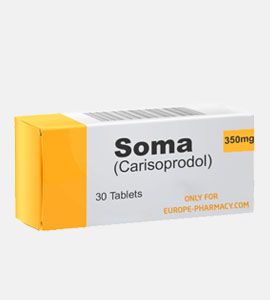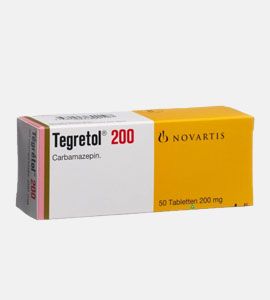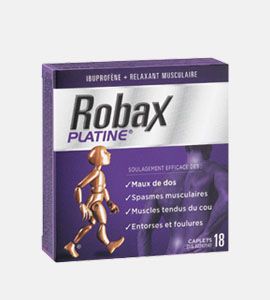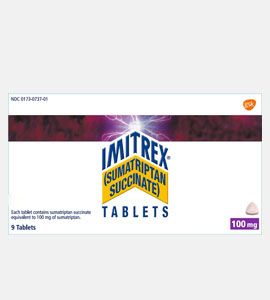If you have neck or back pain, or you’re dealing with some other condition that causes muscle spasms, your doctor might prescribe a muscle relaxer (or muscle relaxant) for you. Having a muscle spasm means that one or more of your muscles is contracting and the twitching or cramping is out of your control. It can happen for a lot of different reasons, and can sometimes be very painful. While there are many different treatments for pain, your doctor may decide that a muscle relaxer is the best solution for you.




Table of Contents
How do muscle relaxants work?
Muscle relaxants lower muscle tone (muscle tension at rest), providing relief from stiff muscles and pain caused by strain, sprain or other forms of muscle injury. These drugs cause the skeletal muscles to relax. This is because they act on the brain or on the muscles; respectively, they are called centrally acting and peripherally acting muscle relaxants. Centrally acting substances (for example, diazepam and baclofen) reduce muscle tension. This occurs through a complex mechanism of action. The substances act on signal transmission in the spinal cord so that stimuli cannot lead to increased muscle tension. Thus, although muscle tone is lowered by these agents, muscle strength itself remains unaffected.
What types of muscle relaxants are available?
All centrally acting substances have a somewhat sleep-inducing effect. They are mainly used in acute muscle spasms, especially in the neck, and in stiff back muscles. These drugs are also useful in injuries to the spinal cord, multiple sclerosis, amyotrophic lateral sclerosis, tetanus, and the like.
- Peripherally acting drugs have a very different effect. Examples of peripherally acting drugs are: pancuronium, atracurium, mivacurium, succinylcholine and dantrolene. Except for dantrolene, all of these substances act at the place where the nerve and muscle connect, called the motor end plate. They block the nerve impulses that are conducted by the nerve to the muscle, causing paralysis. Thus, they cause méér than muscle relaxation as with the centrally acting muscle relaxants.
- Dantrolene does not act on the motor end plate, but directly on the muscle cells. It blocks the release of calcium (necessary for muscle contraction), causing the muscles to relax. Peripherally acting muscle relaxants are mainly used in conjunction with drugs for general anesthesia. The respiratory muscles, which then also cease to function, can be taken over by a respirator.
- These agents are also of value in severe cases of tetanus, status epilepticus, and in spastic disorders of the central nervous system such as multiple sclerosis and amyotrophic lateral sclerosis. The dosage of the drugs is slowly increased until the muscle spasm is eliminated.
Usage of muscle relaxants
Your doctor might first suggest you try an over-the-counter medicine like acetaminophen (Tylenol) or ibuprofen (Advil) to treat your pain. But if those don’t work, or you can’t take them because you have another issue like liver problems or ulcers, you may need to try a muscle relaxant.
- Muscle relaxants are ideally prescribed for acute rather than chronic pain. They may be an option if pain is preventing you from getting enough sleep. Because muscle relaxants cause drowsiness, they can help you get rest when you take them at night.
Side Effects
No matter what kind of muscle relaxer you take, it is common to have side effects. Some muscle relaxants, however, can have potentially serious side effects, like liver damage. Your doctor will work with you to find the medication that makes the most sense for your situation.
The most common side effects include:
- Tiredness, drowsiness, or sedation effect
- Fatigue or weakness
- Dizziness
- Dry mouth
- Depression
- Decreased blood pressure
You shouldn’t drink alcohol while taking muscle relaxants. These medications make it hard to think and function normally, even if you take a low dose, so combining them with alcohol can increase your risk of an accident. You also shouldn’t drive or operate heavy machinery while taking muscle relaxants. Some muscle relaxers start working within 30 minutes of taking them, and the effects can last anywhere from 4 to 6 hours. Do you want to check specific products? Then make sure to check out our Pharmacy page.
How should muscle relaxants be taken?
These medicines are usually taken by mouth (tablets, capsules or liquids). In general, your doctor will start off with a low dose and increase this gradually over a number of weeks. This is in order to help your body get used to these medicines. Injections into the back are always started in the hospital.
Cannabis extract is a spray for the mouth. It should be sprayed under the tongue or on to the inside of the cheek once or twice a day. Always change the area in your mouth where you spray, to prevent irritation of the mouth. Like other muscle relaxants you will normally start off with a low dose. The number of sprays used is normally increased over a number of days.
Addiction and Abuse
Muscle relaxants can be addictive for some people. Taking them without a prescription, or taking more than your doctor has recommended, can increase your chances of becoming addicted. So can using them over a long period of time.
- Almost all cases of addiction and abuse are due to the drug carisoprodol (Soma), which is considered a schedule IV controlled substance. That’s because when the drug breaks down in your body, it produces a substance called meprobamate that acts like a tranquilizer. People who become addicted to carisoprodol sometimes abuse the drug because they are no longer using it for medical reasons, and they crave it.
- Other kinds of muscle relaxants may be addictive too. Cyclobenzaprine (Flexeril) has also been linked to misuse and abuse.
- With prolonged use you can become physically dependent on some muscle relaxants. This means that without the medication, you can have withdrawl symptoms. You may have insomnia, vomiting or anxiety when you stop taking it.
Who can’t take muscle relaxants?
For a full list of people who should not take each type of muscle relaxant, refer to the specific leaflet for that medication.
- Baclofen should not usually be given to people who have a stomach ulcer, epilepsy, mental health problems or diabetes.
- Dantrolene should not be given to people with liver, heart or breathing problems.
- Diazepam should be avoided in people who have severe breathing difficulties – for example, people who have myasthenia gravis and people with lung problems.
- Tizanidine should not usually be given to elderly people, or people who have severe problems with their liver.
- Methocarbamol should not be used for people who have myasthenia gravis or severe breathing problems. It also should not be used in people with epilepsy or brain damage.
- Cannabis extract can only be prescribed by specialists for people with multiple sclerosis. People who have a personal or family history of hallucinations or delusions or any other severe psychiatric disorder should not take cannabis extract.




Last Updated on August 29, 2021 by Toni El Clikos

